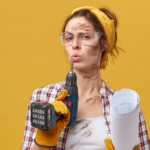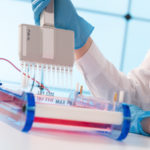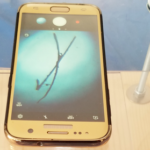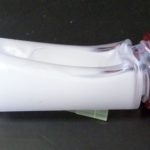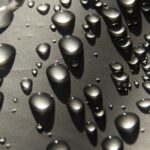Most scientists rely on research grants to fund their research, and not every lab has a healthy budget to splash out on fancy new equipment. And let’s face it, in today’s climate of research grant cuts, even well-funded labs are looking for ways to be more efficient with their grant money.
We’re here to help you with our Lab DIY for researchers Hub—providing low-cost tips, tricks, and hacks for getting your experiments done on a shoestring.
That’s right folks, as intimidating as it may sound, with our help you can make your own reagents, and build your own lab apparatus using tools and equipment you can easily get hold of without breaking the bank. You probably already have most of the tools that you need right in your lab or at home!
From calibrating your own pipettes, building your own PCR machine, to making your own Taq polymerase or competent cells. If you’re looking for ways to save in the lab, you’ve come to the right place!
DIY Molecular Biology Methods
If you buy competent E.coli regularly, you’ll know that they are pretty expensive. Making your own, good quality competent E.coli is very easy—one morning’s work (with a bit of pre-planning) is all it takes. We’ve curated a list of easy-to-follow DIY tips and tricks for navigating some of the most common molecular biology protocols, to help you save money and get your experiments done.
We’ll show you how to make a DIY stock of chemically competent E. coli, the workhorse in the molecular biology laboratory.
There’s more than one way to do a plasmid miniprep. Here are 5 to add to your molecular biology arsenal.
Making good quality electrocompetent E. coli is very easy. One morning’s work (with a bit of work ahead of time) is all it takes.
Here, we share a protocol for a midiprep, which, if not faster, gives a larger plasmid DNA yield than any commercial midiprep kit.
Removing proteins from acqueous solutions can be a pain if you have loads of samples to do. This article explains how to prepare the DIY phase separating gel to easily and effectively separate two-phase mixtures, saving you time and money.
Look Ma, No Kit! Unlike with kits, there are no propriety reagents in a DIY protocol. You know what exactly is in each reagent. The DIY approach is catching on!
If you want a more efficient, cheaper way to do bacterial transformation, you are definitely going to like this article.
We’ve created an alternative, centrifugation-based method for the purification of cell-free DNA (cfDNA) that utilizes a benchtop clinical centrifuge.
(Almost) Free PCR!
Bet you’ve never considered making your own PCR machine, or Taq polymerase? We’ll show you how you can. And we’ve also got a selection of handy tips—from primer design to dealing with contamination—to help you get the best from your PCR reactions and master a range of PCR techniques.
Labs across the world spend a great deal of money on Taq polymerase. Find out how to save your lab some money.
The biggest source of PCR contamination is aerosolized PCR products. How do you fix PCR contamination and avoid it in the future?
When you’re trying to solve a PCR problem, you’ll probably resort to a Google search at some point or another. Here’s a list of the Top 10 go-to websites to help solve your PCR problem.
Mycoplasma is one of the biggest threats to cell culture. It’s quite easy to test cell cultures for the presence of mycoplasma using PCR, and we’ve got a simple protocol for routine testing.
You can build your own PCR machine using tools and equipment you can get easily and without breaking the bank. Well, what are you waiting for?
Here is a rundown of our top features to look out for when you are shopping for a new PCR instrument.
Homemade Lab Equipment
From building a homemade shaking incubator fashioned out of an old-time record player to a step-by-step guide for building your own microscope using your smartphone, we’ve put together a shortlist of low-tech lab gadgets that you can easily make at home or in the lab, or in your garage lab.
Want to build your own microscope for almost nothing? You probably already have most of the tools that you need right in your lab or at home! Here’s how.
As biochemists, we routinely run SDS-PAGE to analyze our proteins. Imagine the time and effort you are going to save when you can run every gel to perfection.
Mycoplasma is one of the biggest threats to cell culture. It’s quite easy to test cell cultures for the presence of mycoplasma using PCR, and we’ve got a simple protocol for routine testing.
Find out how to build a plate centrifuge using a salad spinner. Gathering the components is as complicated as it gets!
Looking for cheaper or faster solutions in the lab? Here’s our top 10 list of ways to use everyday items to make gadgets and for low-tech solutions for the lab.
Get awesome pictures of your DNA gels with a standard digital camera and an orange filter. Here’s how.
Webinars
From good pipetting technique to improve the accuracy of your results—to tips and tricks that will help you get the results you want for your projects, publications, and grants. Stay on top of your research projects, and make your lab work more enjoyable and productive—and improve collaboration in the lab at the same time.

Reproducibility: Mastering the Art of Pipetting

How To Be Happier and More Productive in Your Work

Tips and Tricks for Western Blotting and Antibody Selection
Contact Us
Didn’t find what you were looking for? Or perhaps you have some tips and tricks that we haven’t covered here? Get in touch and let us know so we can continue to improve the information we share!
Most Recent
Discover whether it’s better to build or buy the latest microscope technology for your lab. This article weighs the advantages of custom builds against the ease and reliability of purchasing from vendors, helping you make the best choice for your research needs.
You can build your own PCR machine using tools and equipment you can get easily and without breaking the bank. Well, what are you waiting for?
ECL is an expensive reagent. Why not learn how to make ECL yourself? This cheap and simple option will give you better blots more often!
Kits for DNA gel extraction are a great way to save time in the lab, but they are costly and produce much plastic waste. Discover three easy kit-free DNA gel extraction methods that can save you money and reduce waste in the lab.
We’ll show you how to make a DIY stock of chemically competent E. coli, the workhorse in the molecular biology laboratory.
Not every lab has the cash to shell out on fancy equipment. We share some trusty lab hacks and welcome you to share your own with us.
It is never too late to take proactive measures to protect your research budget in the event of a funding lapse.
Equipment Maintenance Tips
Taking freshly prepared samples to an instrument only to discover that it is broken is one of the most frustrating things that can happen in the lab. Samples, reagents, time, and precious grant funding are wasted, negatively impacting everyone else in the lab, from fellow students and postdocs to frugal lab managers and your supervisor. Properly maintaining laboratory equipment is of the utmost importance, and ensures that your scientific results are not compromised by a lack of proper care and maintenance. Here is a selection of tips you should be aware of.
Rust spots provide a good shelter for bugs, which will get there one day, and from the rust into your tissue culture. Here’s what you can do to deal with the problem as soon as you see it.
The more expensive your lab centrifuge, the more sensitive and the easier it is to break. What can we do to give these pricey monsters a long, successful tenure in the lab? Read our 5 easy tips.
Have a healthy respect for the ultra! Here are some hints and tips for using a preparative ultracentrifuge, disaster free.
Here are some ideas to make your liquid handling robot perform at its best.
Here are five unfortunately easy ways to wreck a centrifuge, and how to make sure it never happens in the first place!
Here are our top 10 least favorite ways to ruin that larger-than-life-sized autoclave. Don’t try these—your lab manager won’t be pleased!
A neglected pH meter means less reliable experiments, poor reproducibility, and your time wasted. So, learn how to use a pH meter correctly!
Here’s a quick guide to cleaning and maintenance, to help you overcome your fears of the monsters lurking in your water bath.
It’s necessary to check pipette calibration every few months to ensure accuracy by dispensing the right volumes. This article explains how to perform pipette calibration yourself so you can ensure they are accurate and avoid the wait for their next service.
Become an Eco-Aware Lab Warrior
Were you attracted to biological research because of an interest in nature and the noble desire to make the world a better place? Those ideals are often stripped away when the realities and demands of research life take over—it turns out that it’s not so easy for one person to save the world. We end up working in labs that generate vast amounts of waste and consume a lot of power. Of course, much of this waste and consumption is unavoidable, but there are a lot of ways that we can reduce the environmental impact of our labs by improving our practices. From donating surplus equipment to recycling to ordering only the amount that you need, we’ve got a selection of ideas for reducing your lab’s environmental impact and saving money at the same time—and become a local hero and eco-warrior at the same time.
Looking for cheaper or faster solutions in the lab? Here’s our top 10 list of ways to use everyday items to make gadgets and for low-tech solutions for the lab.
Mammalian cell culture can easily deplete grant funds. Sometimes you can alter protocols to use expensive reagents sparingly. Here are a few tips!
ECL is an expensive reagent. Why not learn how to make ECL yourself? This cheap and simple option will give you better blots more often!
Bioscientists are generally nature-lovers at heart, but the average bio lab is incredibly wasteful. Here are some ways to reduce your lab’s environmental impact.
A variety of lab supplies can be purchased off the shelf in your neighborhood, which can save you time and money. Here is a grocery list of items that you can stock your lab with today!
Not every lab has the cash to shell out on fancy equipment. We share some trusty lab hacks and welcome you to share your own with us.
Resolve lab obstacles with creative solutions with these non-lab products that can actually be very useful in the lab environment.
Glossary
Some of these terms may seem pretty obvious, but sometimes it’s a good idea to spell them out.

